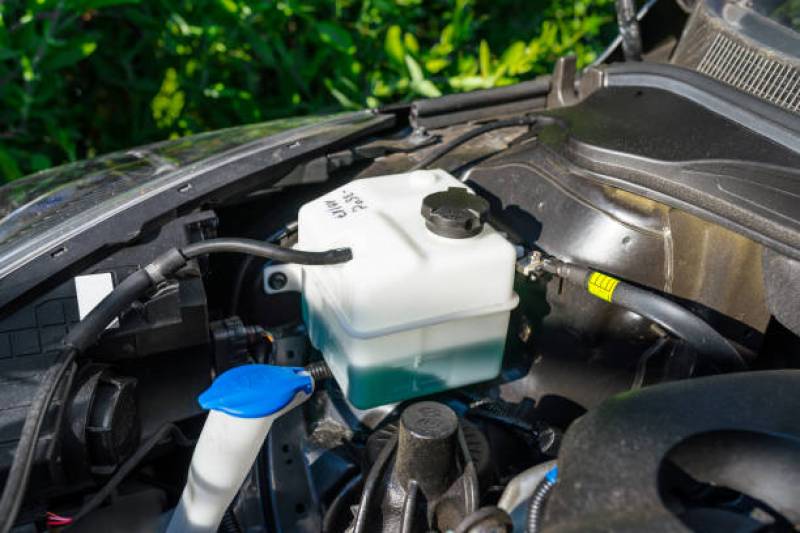Quick Navigation

The ideal execution of a car is subject to an assortment of factors. One of the most significant is the productivity of the vehicle’s cooling system.
The vehicle cooling system allows the engine to keep up its working temperature inside adequate limits. It does this by circling a coolant and water blend under pressure.
On the off chance that this pressurized system is not maintained. For example, when there is leaking while the car is in motion, then the engine can overheat.
This can likewise effectively convert into more significant damage and, in the end, expensive repairs.
Car Coolant System Explained
Before we dig into the fundamental reasons for vehicle coolant leaks while the car is running, it is in every case best to begin with a review of how the system functions.
The internal combustion engine generates loads of highly controlled blast by each movement. These combustions ignite the fuel-air blend in every cylinder chamber.
These controlled blasts create enough energy to move the crankshaft, which drives the entire vehicle.
With each controlled blast, heat is likewise generated. If this temperature is not controlled inside ideal motor activity, it can wreck or harm the motor. The reason for a vehicle’s coolant framework is to control these unreasonably high temperatures.
A fluid vehicle coolant flows through the various sections situated in the car engine block and heads. In the process of these flows, it picks up the engine’s heat along the way.
As the now-warmed fluid advances outside the engine, it goes to the radiator. While in the radiator, it is cooled via air that enters from the front of the vehicle. Fans can likewise help cool the hot fluid arriving at the radiator.
The currently cooled fluid is again pushed through the passages of the engine to gather more heat. At the center of this circulating coolant is the water pump.
It is the responsibility of the pump to ensure that the liquid coolant travels through the system.
Causes Of Coolant Leaks While Driving
The vehicle coolant system is adequately a closed-off sections, cylinders, and hoses. More significant parts like the engine and the radiator, coolant leaks can happen in any place in the system. These leaks lead to dripping coolant while driving.
There are a few faults that can cause the coolant to leak while driving.
- External Leaks
- Radiator Leaks
- Radiator Cap Leaks
- Blown Head Gasket
- Failed Water Pump
- Issues with the Coolant Tank Extension
1. External Leaks
Coolant fluid moves to the engine to get heat. This heat is sent back to the radiator to cool before heading out to the engine. Any leaks in these parts, except for the engine, is viewed as an external leak that can lead to dripping while the car is in motion.
External vehicle coolant spills are the most straightforward to analyze. You do not require extravagant devices to test for anything.
It would be best if you had an eye for detail to search for any indication of breaks through the whole course of the vehicle coolant system aside from the engine. Carry out a meticulous investigation of the hoses, the radiator, and the coolant tank.
2. Radiator Leaks
Radiator hoses are mostly responsible for external coolant spills while the car is running. Elastic hoses may weaken after some time and tend to burst or become weak. Indeed, even a little crevice can let out fluid coolant to getaway.
Connections between hoses and other coolant system segments can likewise lead to breaks. Free clasps can allow fluid coolant to leak.
Recommended Solution
It is essential to examine the radiator hose for swells, splits, abnormal non-abrasiveness, openings, or even crumbled hose. Any indication signs have the radiator hose replaced right away.
Damage to the radiator can likewise prompt outside coolant leaks while driving. A leaking radiator might be more cumbersome to analyze than a flawed radiator hose, be that as it may. As a rule, the radiator should be taken out and checked for air pockets when lowered in the water.
The radiator is a closed system of cylinders. Coolant should stream flawlessly over the arrangement of cylinders. On the off chance that air pockets appear anywhere on the radiator, this ordinarily flags the presence of a hole.
3. Radiator Cap Leaks
In contrast to the hose, the radiator cap is saddled with keeping the ideal pressure expected to move the coolant-water mixture. With the loss of pressure, the coolant fluid will not be able to travel through the system.
The radiator of any car is considered as a pressurized system. This permits the hot fluid originating from the engine to travel through the cylinders’ arrangement in the radiator. The process of traveling allows the coolant to cool off as it moves along.
If the radiator cap is feeble or leaking, the radiator’s pressure is not kept up. This can happen if the radiator cap has been damaged by wear and tear if it does not fit appropriately into the radiator’s cover. Holes can likewise occur if an inappropriate radiator cap is used.
Recommended Solution
There is a simple method to verify that there is a leak in the radiator cap. Drive your car to the nearest service center so an expert can perform a pressure test on the radiator cap.
You can also check your vehicle user manual and check the radiator cap’s right pressure just as the appropriate type of radiator cap to use.
4. Blown Head Gasket
Your vehicle’s head gasket assumes a colossal part in how well your engine performs. At the point when a head gasket blows, you probably will not notice it for a long while. You could travel for a few miles before you start to see an issue.
The head gasket deals with a broad scope of temperatures, both an incredibly high and low force in the motor. It sits in the middle of the cylinder head and the engine block. When it starts to leak, it is alluded to as “blown.”
When that occurs, it can no longer keep the motor oil and coolant separate, which is very hazardous and can prompt engine failure. It can also lead to coolant spills while the car is running. As the coolant level goes down, so does your vehicle’s capacity to cool down.
Recommended Solution
It is essentially the responsibility of a professional auto mechanic specializing in cooling systems to identify and fix the problem due to the complex nature.
Your coolant system is built to deal with the excessive heat created by your engine so it can run normally. Any break inside this closed system can bring about significant damage to the engine.
5. Failed Water Pump
The water pump assumes an essential part in guaranteeing that coolant flows all through the cooling framework. It is driven by a belt situated on the lower part of the engine, close to the drive belts. It interfaces with the lower hose of the radiator.
However, now and then, that hose connection can turn out to be loose, or it may erode. Likewise, it might endure a type of external damage that makes it get a hole and, consequently, a leakage.
Notwithstanding the reason, when a water siphon has an issue that keeps it from moving coolant all through the system, your coolant will drip while in the car is running and, in the long run, lead to an engine overheat.
Recommended Solution
Damages to water hose are mostly due to wear and tear. Replacing them is the best outcome to avoid continuous leaking while your car is running and consequently avoid overheating.
6. Issues With The Coolant Extension Tank
Vehicles have an extension tank to circulate coolant to the radiator. Most extension tanks come in plastic form and are located close to the engine. It is usually joined to the radiator by an elastic hose. This hose takes gets coolant to and from the radiator as the engine warms up or cools down.
With time and exposure to temperature changes, that plastic can debilitate, thus can the parts join to it. The holder may split, or the cap can spill, allowing coolant to leak while your car is running.
In other cases, the reason for coolant leakage while the car is running results from overfilling the extension tank.
Recommended Solution
To avoid coolant leakage while the car is running, adhere to the required quantity of coolant recommended for the extension tank.
One approach to avoid coolant leaks while your vehicle is running is to follow a standard maintenance plan that involves changing your radiator’s coolant. Old coolant can go stale. When that occurs, it gets acidic and starts destroying the aluminum in your radiator.
Scheduled maintenance can likewise identify free and disintegrating hoses or different issues that can prompt a spilling radiator.
In case you are seeing indications of leaking coolant while the car is running, it’s ideal for getting your vehicle to an expert who can find and fix the issue.

James has been a car enthusiast since his childhood when he learned the differences between a ford and a chevy from his father. He loves to drive and restore old cars with a special drive for Italian marvels. Currently, he has a 1968 Alfa Romeo. He has studied aeronautics and civil aviation in his college and still gets smitten by Galant SS and Lancer GSR.
He is a New York-based product training director working with a giant automotive retailer. He loves to review and uncover the vehicles and their fascinating stories. He believes in keeping it legitimate with a keen passion for research on the latest technological upgrades in cars. While reading his articles or blogs, you can sense the extensive research and dedication backing the piece of text. He loves fried chicken, music, and spending quality time with his pet dog.






